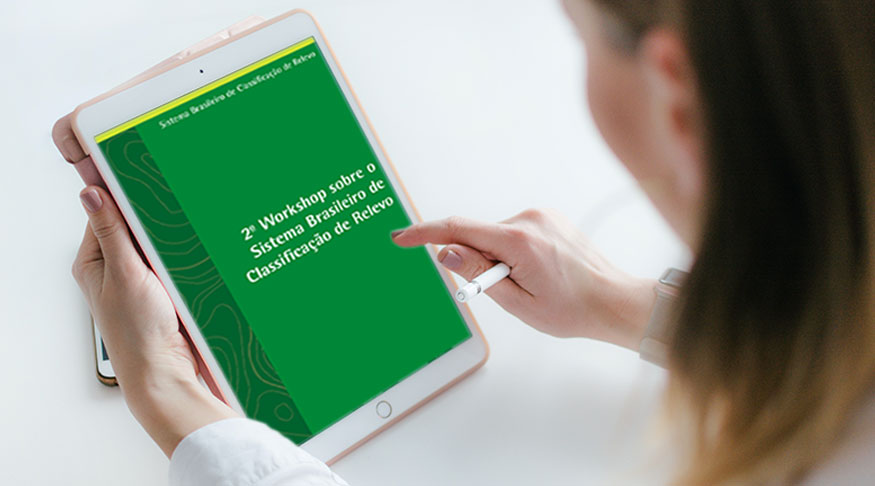Geosciences
During Environment Week, IBGE releases progress on the Brazilian System of Relief Classification (SBCR)
June 06, 2024 10h00 AM | Last Updated: June 07, 2024 11h53 AM

In celebration of the World Environment Day, the IBGE is releasing today (6) the report of the second Workshop on the Brazilian System of Relief Classification (SBCR). The publication registers important advances in the SBCR, such as the conceptualization of the five major relief classes that make up the first taxonomic level of the System: mountains, plateaus, tablelands, lowlands and plains.
“Presenting the advances of the SBCR in the World Environment Day is extremely important, since relief is strongly related to recognizing and distinguishing different landscapes and environments. Advancing in its classification and cartographic representation means making these tasks easier for students, teachers, researchers, managers and citizens, especially in the challenge of guaranteeing the quality and conservation of the environment”, said Rosangela Botelho, head of the sector of Physical Media of the Department of Natural Resources Mappping of the Coordination of Environment of the IBGE Directorate of Geosciences and technical coordinator of the publication.
The 2nd Workshop took place from February 28 to March 3, 2023, at the Federal University of Paraná, in Curitiba, and was attended by members of the SBCR, researchers from various Brazilian educational and research institutions with experience in geomorphological mapping. The Relief Map of Brazil at the first taxonomic level of the SBCR, which has already been presented to the scientific community, as well as the implementation of the second taxonomic level, which refers to geological morphostructures, were discussed.

The first edition of the Workshop, held in November 2019, in collaboration with the Brazilian Geological Service (SGB) and the Brazilian Geomorphology Union (UGB), took on the mission of building a taxonomic system for the Brazilian relief. This system seeks to standardize the language and representation of the different forms of relief that exist in the country. The publication formalized the commitments made by the scientific community and can be accessed through the IBGE Library.
O 2º Workshop sobre o Sistema Brasileiro de Classificação do Relevo estava inicialmente marcado para ocorrer em 2020, mas, em função da pandemia da COVID-19, o evento precisou ser adiado. “Contudo, os estudos e reuniões virtuais entre os pesquisadores ocorreram regularmente por meio dos Grupos de Trabalho Direcionado (GTDs), que levantaram questões fundamentais a serem discutidas na plenária desta segunda edição”, atesta Rosangela.
The 2nd Workshop on the Brazilian System of Relief Classification was initially scheduled to take place in 2020, but due to the COVID-19 pandemic, the event had to be postponed. “However, studies and virtual meetings among the researchers took place regularly through the Directed Working Groups (GTDs), which raised fundamental issues to be discussed in the plenary session of this second edition”, says Rosangela.
Understanding the relief is crucial, even to help preventing and managing disasters, such as the one experienced in Rio Grande do Sul. “In the disaster in the Serrana region in 2011, the triggering factor was the same, heavy rains, but the water drained away quickly because the relief is mountainous. In Rio Grande do Sul, on the other hand, the situation is completely different, with the water level still high more than 30 days later", said Rosangela.
In addition to the Workshops on the Brazilian System of Relief Classification, the SBCR also organizes excursions and events in which the advances of the System are presented to the scientific community. On June 11-13, the 3rd Workshop on the Brazilian System of Relief Classification will take place at the Brazilian Geological Service (SGB), in the city of Rio de Janeiro. The SBCR also has an e-mail address to which queries and suggestions can be sent (sbcr@ibge.gov.br). Read here about the technical excursion to the Fluminense mountains conducted in 2022.
“It is believed that these advances will soon be part of the relief maps of Brazil in textbooks and school atlases. By explaining to their students that Brazil has mountains, the teacher will have the opportunity to talk about the evolution of planet Earth, its different configurations in lands and seas over millions of years, tectonic plates and why our mountains are high, but not as high as the Andes and the Himalayas, for example. Recognizing our mountains is a way of broadening the history of the formation of the Brazilian relief in the classroom”, concluded Botelho.




















